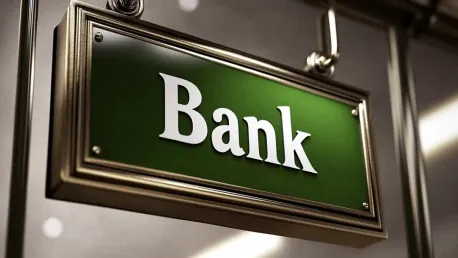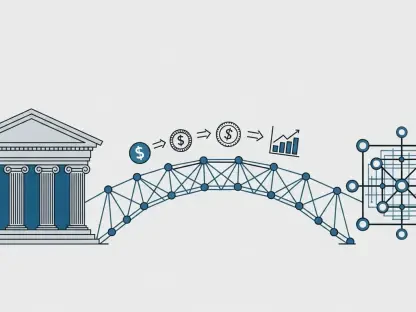In a remarkable milestone for the Philippine banking system, total deposits have surged beyond P20 trillion in 2024, marking a significant achievement in the country’s financial landscape. This impressive growth is driven by an 18% increase in the number of deposit accounts, culminating in 143.35 million by the end of the year. Furthermore, the number of depositors expanded by 15% to reach 128.73 million. This development reflects the growing trust and participation of Filipinos in the formal banking system, setting the stage for further advancements in financial inclusion and economic stability.
Surge in Traditional Bank Deposits
Universal and Commercial Banks Dominate
A substantial portion of the deposits was concentrated in universal and commercial banks, which collectively held P19.1 trillion across 93 million accounts. This indicates an 8% growth in their depositor base, emphasizing the dominant role these institutions play in the country’s banking sector. Depositors’ confidence in these banks is evident, as they continue to be the preferred choice for securing significant sums of money. The consistent growth in their depositor base and the substantial amount of deposits they manage signal a stable and trusted banking environment.
These banks have been instrumental in providing a broad spectrum of financial services, catering to both individual and corporate clients. Their extensive network and comprehensive service offerings have made them a cornerstone of the Philippine financial system. The steady increase in deposits not only highlights the effectiveness of their services but also underscores the trust and reliability that depositors place in these institutions. This growth trajectory is expected to continue as universal and commercial banks enhance their digital capabilities and expand their reach to more Filipinos.
Thrift and Rural Banks See Steady Growth
Thrift banks also showcased robust growth, amassing deposits worth P826.21 billion from 7.3 million clients, marking a 12% increase. These banks provide valuable services to niche markets, often focusing on particular regions or customer segments. Their growth reflects the increasing need for specialized banking services that cater to the unique requirements of different communities. The role of thrift banks in the financial ecosystem is crucial as they fill gaps that larger banks may overlook, contributing significantly to financial inclusion.
Rural and cooperative banks experienced growth as well, with deposits amounting to P350 billion spread across 23.6 million accounts. These banks are essential in providing financial services to rural and underserved areas, playing a pivotal role in the economic development of these regions. The increase in deposits indicates a growing acceptance and trust in formal banking systems even in the more remote parts of the country. By offering accessible and personalized services, rural and cooperative banks ensure that more Filipinos can actively participate in the financial system.
Digital Banking Revolution
Rapid Expansion of Digital Banks
One of the most remarkable trends in the Philippine banking sector is the rapid expansion of digital banks. In 2024, digital banks raised P96.3 billion in deposits, representing a staggering 40% increase. The sector saw more than 19 million accounts held by 12.4 million depositors, more than doubling from the previous year. This trend signifies a growing acceptance and reliance on digital banking services among Filipinos. Digital banks, with their innovative solutions and user-friendly interfaces, have successfully captured a significant share of the market.
The impressive growth of digital banks can be attributed to their ability to offer high-interest rates and innovative financial products, which traditional banks may not provide. Their convenience and accessibility have made them particularly attractive to the younger, tech-savvy population. Moreover, the ongoing pandemic has accelerated the shift towards digital banking as more people seek contactless and remote banking solutions. This rapid adoption of digital banking marks a significant transformation in the financial habits of Filipinos.
Enhancing Financial Inclusion
The surge in digital banking aligns with the Bangko Sentral ng Pilipinas (BSP)’s goal of integrating 70% of Filipino adults into the formal financial system by 2024. The BSP has been actively promoting the growth of digital banks, with plans to introduce four new slots for digital banking licenses in 2024. This move is designed to enhance competition and foster innovative banking models, further driving financial inclusion. The BSP’s strategy underscores the importance of digital banking in reaching the unbanked and underbanked population of the country.
However, the path to obtaining a digital banking license is not without challenges. The criteria for applicants are stringent, ensuring that only the most capable and innovative providers can enter the market. This rigorous screening process is crucial in maintaining the integrity and stability of the financial system. As digital banks continue to evolve and innovate, they are expected to play a critical role in achieving the BSP’s financial inclusion targets, offering accessible and inclusive financial services to all Filipinos.
The Future of Philippine Banking
In a remarkable achievement for the Philippine banking system, total deposits have exceeded P20 trillion as of 2024. This notable milestone marks a pivotal moment in the country’s financial sector, showcasing significant advances in economic health. The impressive milestone is bolstered by an 18% growth in the number of deposit accounts, reaching 143.35 million by the year’s end. Additionally, the number of depositors has surged by 15%, totaling 128.73 million. This growth mirrors the increasing trust and active participation of Filipinos in the formal banking sector. Such developments signal further progress in financial inclusion and economic stability within the nation. As more Filipinos engage with the banking system, their financial security and overall economic potential are poised for enhancement. Ultimately, these advancements contribute to a more robust and resilient financial landscape in the Philippines, paving the way for continued prosperity and sustainable growth in the years ahead.









